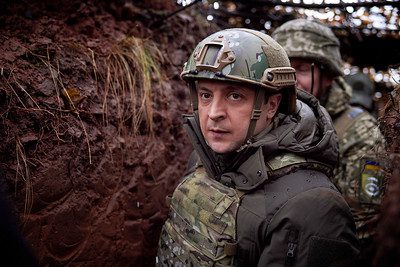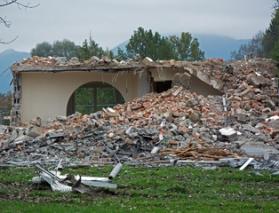
Our technological progress has been remarkable, and this is certainly true of our military technology. It’s being tried out in the wars in Ukraine and Israel, where the defensive technology donated by the United States has been shooting down incoming missiles and making a big difference. And yet military technology has gotten so advanced that, paradoxically, it is bringing back the conditions of World War I.
The war between Russia and Ukraine started as a duel featuring the latest military technology, with drones, anti-missile defenses, precision weapons, and devices of unprecedented lethality. As a result, though, since any advance or attack will be observed and obliterated, both sides are dug in, keeping their heads down in a new kind of trench warfare reminiscent of World War I. Michael Peck reports:
Modern weapons have become so accurate and lethal that soon armies will not be able to maneuver rapidly on the battlefield.
Instead, they will trudge forward under the protection of defensive “bubbles” designed to stop drones and missiles. According to this vision, swift battlefield maneuvers will be replaced by grinding wars of attrition where victory goes to the side that has the most firepower as well as the most resources to replace losses.
It’s a grim vision of warfare that has more in common with the slaughter of the First World War than the mechanized blitzkriegs of World War II and Desert Storm, where infantry and armor backed by airpower seized vast territory. . . .
The Ukraine war has demonstrated that — at least for now — firepower dominates maneuver. Russian and Ukrainian have painfully learned that with surveillance and attack drones constantly overhead, emerging from cover is dangerous and slow. Long-range guided missiles and shells can decimate armored columns that dare to thrust through minefields and layered defenses covered by artillery and airpower. Instead of sweeping offensives, the Ukraine war has become a largely static conflict where immense preparations are made for attacks that might gain an obscure village or a few square miles of territory before the attacker halts to dig in and regroup.
Furthermore, the war is demonstrating the measure/counter-measure dynamic that has long characterized military technology. We have bombs, missiles, and even artillery shells that have GPS guidance, enabling them to hit any programmed target with pinpoint accuracy. But now Russia has learned how to jam them. From Yaroslav Trofimov of the Wall Street Journal (behind a paywall):
The Excalibur artillery round performed wonders when it was introduced into the Ukrainian battlefield in the summer of 2022. Guided by GPS, the shells hit Russian tanks and artillery with surgical precision, as drones overhead filmed the resulting fireballs.
That didn’t last.
Within weeks, the Russian army started to adapt, using its formidable electronic warfare capabilities. It managed to interfere with the GPS guidance and fuzes, so that the shells would either go astray, fail to detonate, or both. By the middle of last year, the M982 Excalibur munitions, developed by RTX and BAE Systems, became essentially useless and are no longer employed, Ukrainian commanders say.
Several other weapons that showcased the West’s technological superiority have encountered a similar fate. Russian electronic countermeasures have significantly reduced the precision of GPS-guided missiles fired by Himars systems, the weapon credited for reversing the momentum of the war in Ukraine’s favor in the summer of 2022, Ukrainian military officials say.
A brand-new system, the Ground-Launched Small Diameter Bomb munition, manufactured by Boeing and Sweden’s Saab, has failed altogether after its introduction in recent months, in part because of Russian electronic warfare, Ukrainian and Western officials say. It is no longer in use in Ukraine pending an overhaul.
Now not just Ukraine and Russia but the militaries of other nations are realizing the importance of old-fashioned artillery. Says Trofimov:
One of the lessons learned in Ukraine is about the continuing importance of old-school unguided artillery shells, the manufacturing of which is only now beginning to pick up in the U.S. and Europe after decades of decline, said Lt. Gen. Esa Pulkkinen, the permanent secretary of Finland’s defense ministry. “They are immune to any type of jamming, and they will go to target regardless of what type of electronic warfare capability there may be,” he said.












